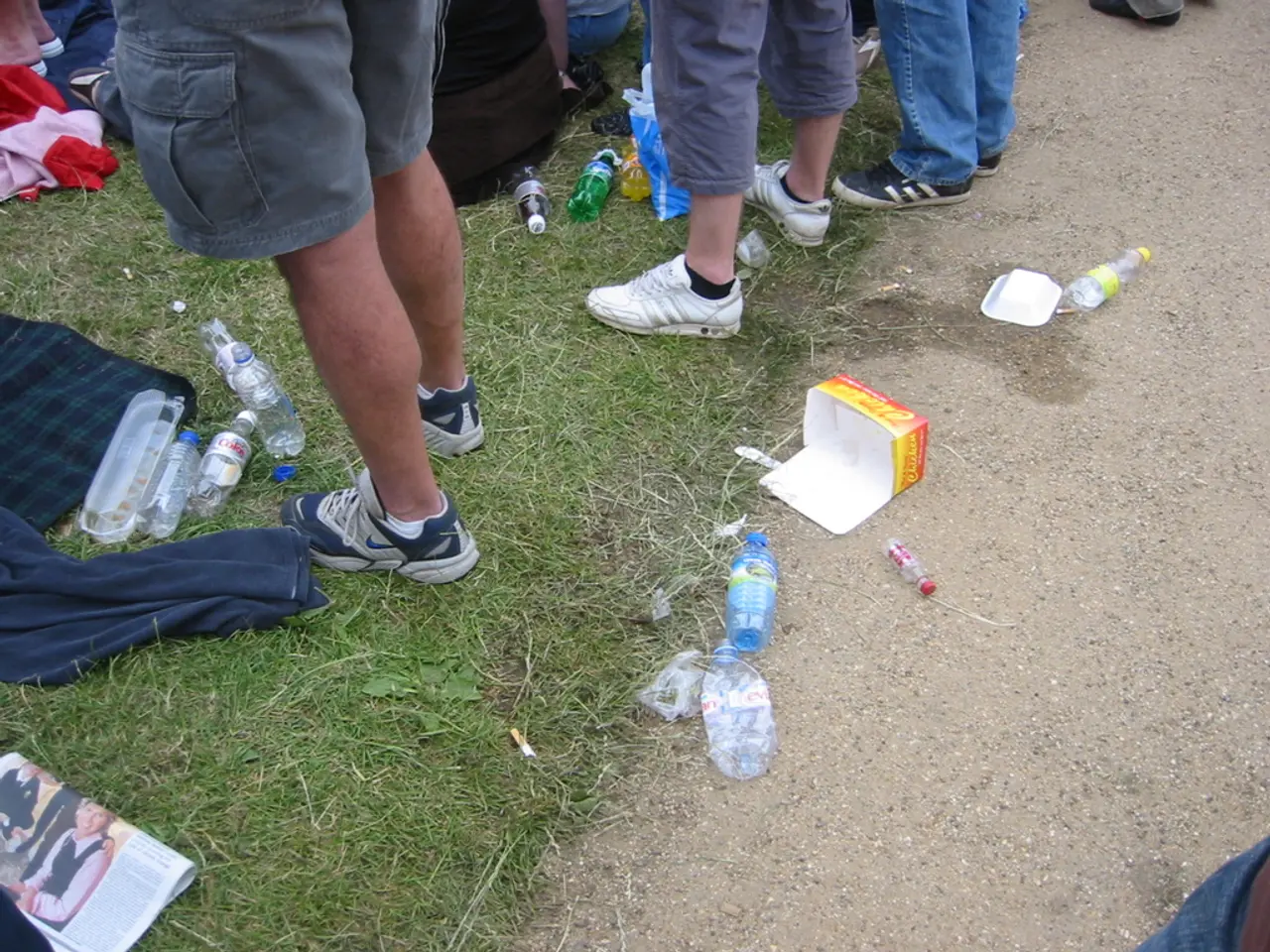Waterproofing Accessory Effectively Enhances Durability of Camping Footwear for Hiking Adventures
In the realm of outdoor adventurers, maintaining waterproof hiking boots is essential for a comfortable and safe trek. One natural, eco-friendly, and cost-effective solution to this problem is beeswax. Here's a step-by-step guide on how to effectively waterproof your hiking boots using beeswax.
1. **Select the Right Beeswax** Beeswax comes in various forms, such as bars, pellets, candles, or specialized wipe-on products. Bars or pellets are the most versatile, allowing you to control the application.
2. **Clean and Dry Your Boots** Before applying beeswax, ensure your boots are thoroughly cleaned of dirt and completely dry. This guarantees that the beeswax adheres properly and penetrates the material.
3. **Apply Beeswax to the Boot Surface** Rub the beeswax directly onto the boots, covering all areas you want to waterproof. For a smoother application, you can melt the beeswax slightly by warming it with your hands or placing it near a gentle heat source.
4. **Melt the Beeswax into the Material Using Heat** Use a heat source like a hair dryer at home, or a lighter/campfire when outdoors, to gently melt the beeswax so it soaks into the boot material. Move the heat source evenly across the waxed surfaces but avoid overheating or burning the leather.
5. **Let the Wax Set and Repeat if Needed** After melting the wax and allowing it to cool and set, inspect the coverage. For enhanced waterproofing, apply a second layer by repeating the rubbing and heating process until your desired water resistance is achieved.
6. **Regular Maintenance** Reapply beeswax waterproofing regularly, especially before outdoor trips or if you notice water absorption. Beeswax treatment does wear off with time and use, so upkeep is key to maintaining waterproof boots.
An optional tip from some mixtures is to combine beeswax with tallow (3 parts tallow to 1 part beeswax), melt together, and then spread with a rag for easier application and added conditioning.
This natural method provides a durable and eco-friendly waterproof barrier ideal for hiking boots made of leather or fabric. Heat is essential to ensure the beeswax penetrates and bonds with the boot material effectively.
**Summary Table for Beeswax Waterproofing Boots:**
| Step | Description | Tips | |------------------------------|----------------------------------------------|---------------------------------| | 1. Select beeswax | Bar, pellets, candle, or wipe-on product | Bars and pellets most versatile | | 2. Clean and dry boots | Remove dirt and moisture | Boots must be fully dry | | 3. Rub beeswax on surface | Apply evenly over all desired areas | Warm wax slightly for easier rubbing | | 4. Melt wax into material | Use hair dryer or campfire heat gently | Avoid overheating or burning | | 5. Let set & reapply | Allow to cool, repeat for stronger waterproofing| Multiple layers improve protection | | 6. Maintain regularly | Reapply before hikes or if water absorption appears| Keeps boots water-resistant long term |
This process ensures a natural, effective waterproofing layer for your hiking boots using beeswax. Beeswax is widely available online, in camping gear stores, and natural product shops.
Remember, light-colored shoes may darken after application of beeswax. Be careful when heating boots with beeswax close to a campfire to avoid damaging the boots. Cleaning your shoes before applying beeswax is important to ensure the beeswax adheres to the fabric.
Beeswax can be used to waterproof shoes for camping and is a useful emergency measure for unexpected wet weather conditions during camping. A tin or block of beeswax can cost between $5 and $10 and is enough for several pairs of boots. The frequency of reapplying beeswax depends on how often you go hiking and face wet conditions.
Store beeswax in a cool and dry place, such as a resealable pouch or small tin. Some brands blend beeswax with oils like almond or jojoba for easier spreading and a shinier finish. Melt the beeswax over a fire or camping stove before applying it to your shoes.
Waterproofing or Gore-Tex lining on boots should follow manufacturer recommendations. Beeswax is a valuable addition to your outdoor gear, offering a natural, durable, and affordable solution for waterproofing your hiking boots.
- After maintaining waterproof hiking boots, you might find lifestyle articles on outdoor-living blogs that recommend using beeswax as a natural waterproofing solution for boots.
- In addition to waterproofing hiking boots, beeswax can also be found in home-and-garden stores as a versatile product for various uses, such as candles, home cleaning, and personal care.




